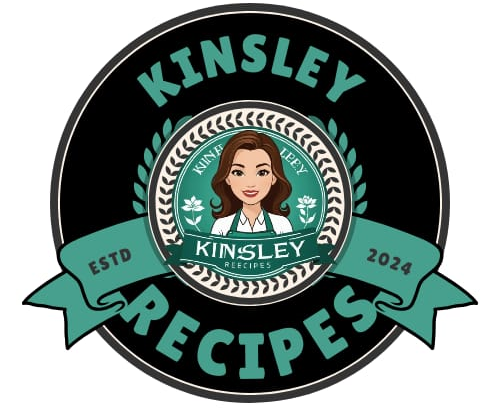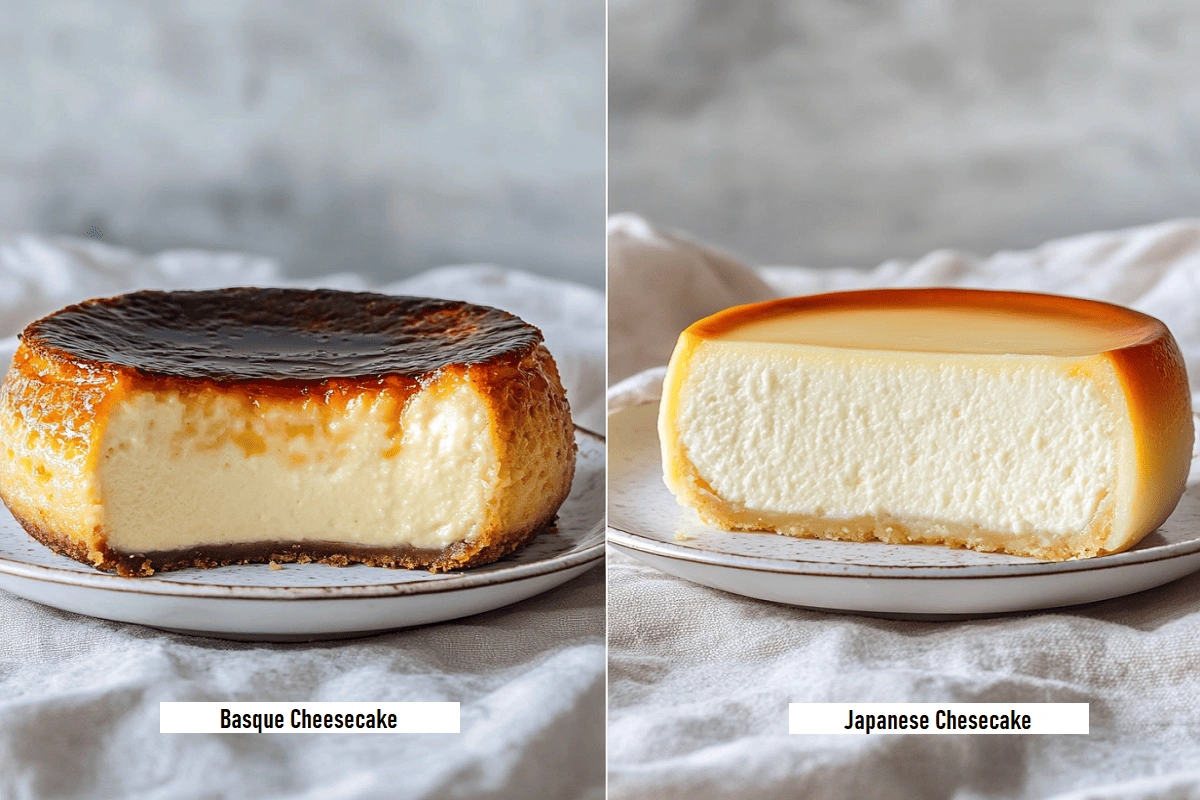Introduction: The Cheesecake Craze Sweeping the World
Cheesecake has always been a favorite dessert, but recently two special versions—Basque cheesecake and Japanese cheesecake—have captured the hearts of food lovers everywhere. Their rich flavors and stunning presentations make them irresistible.
If you’ve ever wondered, is Basque cheesecake the same as Japanese cheesecake, this article breaks it all down for you. Their soft textures and incredible popularity often lead to confusion. To answer the question is Basque cheesecake the same as Japanese cheesecake, we need to dive into their origins, ingredients, and textures.
Understanding these differences can help you choose the right slice for your next gathering or baking project. For a broader look at how cheesecake evolved over time, you can explore the fascinating history of cheesecake here. And if you’re curious about how global dessert trends are shifting today, Food & Wine’s Dessert Trends offers excellent insights.
Why People Ask: Is Basque Cheesecake the Same as Japanese Cheesecake?
If you’re asking, is Basque cheesecake the same as Japanese cheesecake?, the answer is a definite no. While both are modern takes on the traditional cheesecake, they couldn’t be more different in taste, texture, and technique.
Basque cheesecake is bold and rustic. It features a dark, caramelized top—intentionally burnt to bring out a deep, rich flavor. Inside, it remains soft, creamy, and custard-like. There’s no crust, no fluff—just a decadent, melt-in-your-mouth experience that feels indulgent yet simple.
Japanese cheesecake, on the other hand, is light and airy, often described as a fusion between a cheesecake and a soufflé. It’s delicately sweet and pillowy, with a signature jiggle and cloud-like texture that makes each bite feel weightless. It’s baked gently, using a water bath to preserve its bounce and moist structure.
These two cheesecakes represent their culinary roots beautifully—Basque from Spain with warmth and depth, Japanese with finesse and elegance. They are not the same, but each offers a uniquely satisfying journey for cheesecake lovers around the world.
What is Basque Cheesecake? A Burnt Beauty
Basque cheesecake—also known as burnt Basque cheesecake—originated in San Sebastián, Spain. It’s intentionally baked at a high temperature to create a burnt, caramelized crust while keeping the inside soft and creamy as detailed in this guide on what is so special about Basque cheesecake.
Key Characteristics
-
Golden brown, almost scorched top
-
No crust on the bottom
-
Rich, custardy center
-
Slight caramel flavor from the burnt top
Basque cheesecake is often rustic in appearance but surprisingly luxurious in taste.
What is Japanese Cheesecake? A Fluffy Wonder
Japanese cheesecake, sometimes called Japanese cotton cheesecake or soufflé cheesecake, is light, airy, and gently sweetened. It’s loved for its delicate bounce and cloud-like feel.
Key Characteristics
-
Extremely light and fluffy texture
-
Mild sweetness
-
Often served plain or with minimal toppings
-
Soft golden top without any caramelization
This cheesecake melts in your mouth, offering a soft finish that feels both rich and wholesome.
Cultural Reasons Behind the Basque vs. Japanese Cheesecake Debate
Basque Cheesecake
-
Origin: San Sebastián, Spain
-
Cultural Influence: Rustic Basque baking traditions
-
Intention: Celebrate imperfections and natural caramelization
Japanese Cheesecake
-
Origin: Japan, 1940s (inspired by Western cheesecakes)
-
Cultural Influence: Japanese love for light, airy desserts
-
Intention: Create a softer, gentler cheesecake experience
Both cheesecakes represent their regions’ baking philosophies beautifully.
Key Ingredient Differences
Basque Cheesecake Ingredients:
-
Cream cheese
-
Heavy cream
-
Sugar
-
Eggs
-
Flour (minimal)
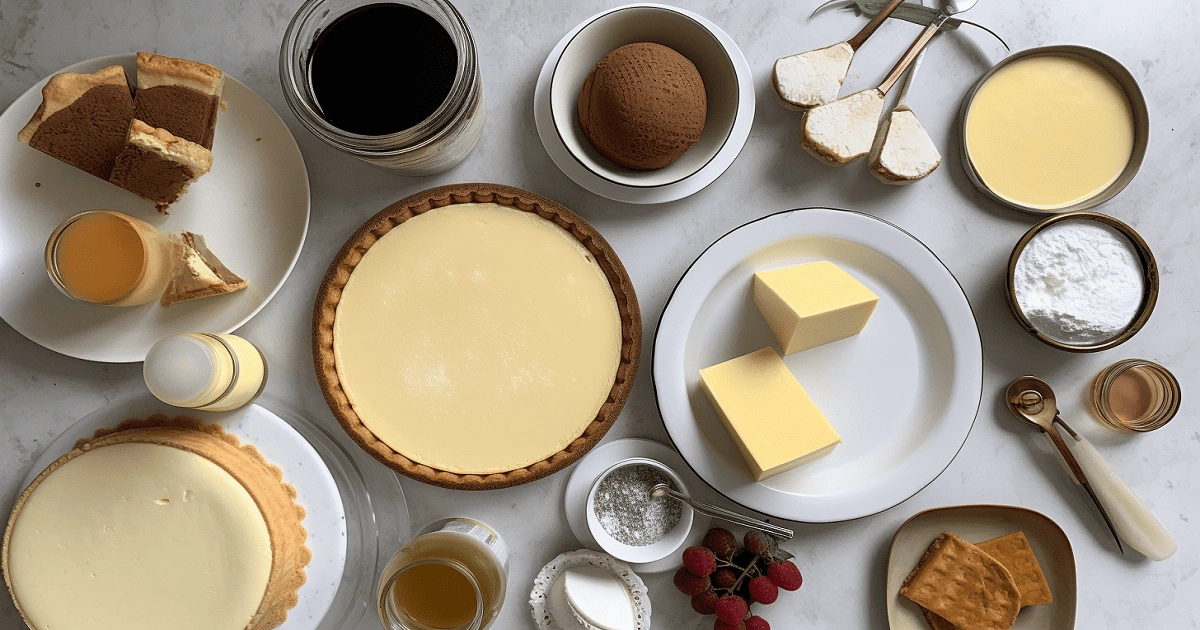
Japanese Cheesecake Ingredients:
-
Cream cheese
-
Egg whites whipped separately
-
Sugar
-
Milk or yogurt
-
Small amounts of flour or cornstarch
While Basque cheesecake leans heavily on richness, Japanese cheesecake focuses on lightness and lift.
Choosing the best cream cheese for baking can impact texture and flavor.
Texture Showdown: Creamy vs. Fluffy
| Feature | Basque Cheesecake | Japanese Cheesecake |
|---|---|---|
| Mouthfeel | Custardy, creamy | Airy, sponge-like |
| Bite | Dense yet soft | Jiggly and delicate |
| Aftertaste | Slight caramel, rich | Clean, subtle sweetness |
Basque cheesecake feels luxurious, whereas Japanese cheesecake feels refreshing.
Appearance and Presentation Differences
-
Basque Cheesecake: Dark, caramelized top, rustic edges, often cracked
-
Japanese Cheesecake: Even golden top, smooth sides, often springy to the touch
Both styles are visually appealing but convey entirely different aesthetics.
Baking Techniques Compared
Basque Cheesecake Baking
-
High heat, short baking time
-
No water bath
-
Purposeful browning on top
Japanese Cheesecake Baking
-
Low, slow baking
-
Always baked in a water bath
-
Prevents browning and keeps texture moist
Their different methods produce their signature textures and appearances.
Sweetness, Flavor, and Moisture Levels
-
Basque Cheesecake: Richer and slightly savory
-
Japanese Cheesecake: Lighter, mildly sweet
Moisture in Basque cheesecake comes from its creamy center. Japanese cheesecake’s moisture is evenly distributed through its airy body.
For bite-sized versions, knowing why mini cheesecakes crack can help improve consistency.
Crust or No Crust?
-
Basque Cheesecake: No bottom crust
-
Japanese Cheesecake: No bottom crust, but sometimes a thin sponge base is used
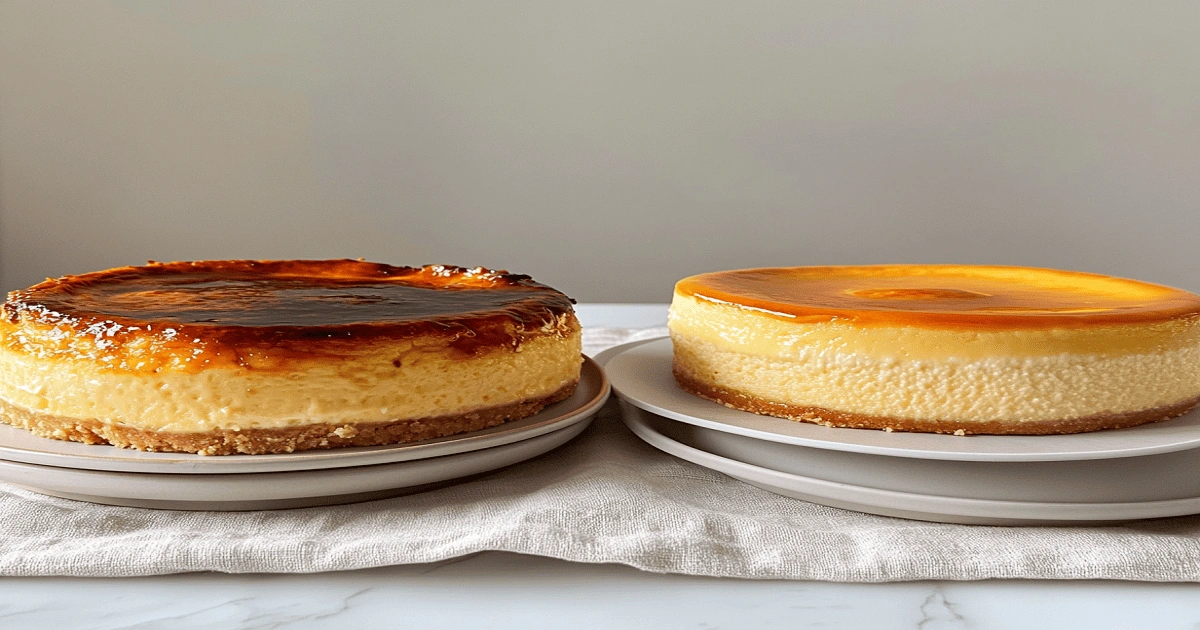
Both focus entirely on the cheesecake itself rather than the base.
For either method, understanding the best baking method for cheesecake can elevate your results.
Global Popularity: Basque and Japanese Cheesecakes
Both cheesecakes have exploded in popularity worldwide:
-
Basque cheesecakes are staples in gourmet bakeries.
-
Japanese cheesecakes dominate Asian cafes and dessert bars.
Their global reach shows how much people appreciate different textures and experiences.
Is San Sebastian Cheesecake Japanese?
No, San Sebastian cheesecake is the traditional name for Basque cheesecake. It hails from Spain and has no connection to Japanese culinary history.
The confusion often comes from the popularity of both cheesecakes at the same time.
Fusion Versions and Creative Adaptations
Bakers worldwide now create hybrid versions:
-
Matcha Basque Cheesecake
-
Chocolate Japanese Soufflé Cheesecake
-
Mango Burnt Cheesecake
These fusion desserts blend techniques and flavors beautifully.
Wholesome Adaptations: Better-for-You Versions
Health-conscious bakers have created alternatives:
-
Using Greek yogurt instead of cream
-
Reducing sugar amounts
-
Replacing flour with almond flour or oat flour
Both Basque and Japanese cheesecakes can be adapted to fit a more balanced lifestyle without losing flavor.
What Is Another Name for Japanese Cheesecake?
Japanese cheesecake is also known as:
-
Cotton cheesecake
-
Soufflé cheesecake
-
Japanese fluffy cheesecake
Each name highlights its light, soft, and airy texture.
Classic vs. Basque Cheesecake: The Ultimate Difference
-
Classic Cheesecake: Dense, rich, often with a thick crust
-
Basque Cheesecake: Crustless, caramelized, lighter center
Basque cheesecake challenges traditional ideas by embracing burnt edges and a custard-like interior.
For a deeper comparison, explore this breakdown of Basque cheesecake vs. regular cheesecake.
What Are the Three Types of Cheesecake?
The main types are baked, no-bake, and chilled whipped cheesecake.
-
Baked cheesecake (New York, Italian)
-
No-bake cheesecake (gelatin-set)
-
Chilled whipped cheesecake (mousse-style)
Basque falls under baked; Japanese cheesecake often blends baked and soufflé techniques.
Expert Tips for Choosing Your Perfect Cheesecake
-
Craving richness? Pick Basque cheesecake.
-
Want something light and delicate? Go for Japanese cheesecake.
-
Love rustic and bold? Try a homemade Basque version.
-
Prefer sophisticated elegance? Japanese cheesecake is your treat.
Choosing depends on your mood and the occasion.
How to Make Basque and Japanese Cheesecake at Home
Making both Basque and Japanese cheesecake at home is surprisingly doable, even for beginner bakers. With a few ingredients and attention to technique, you can recreate these global favorites in your own kitchen.
To Make Basque Cheesecake:
Start by preheating your oven to a high temperature—around 220°C (425°F). In a bowl, blend cream cheese, eggs, sugar, and heavy cream until smooth. Pour the batter into a lined springform pan and bake until the top turns a rich golden brown with slightly burnt edges. This caramelized crust is what gives Basque cheesecake its signature flavor. Allow it to cool slightly before serving, letting the creamy center settle.
To Make Japanese Cheesecake:
Begin by whipping egg whites until stiff peaks form. In a separate bowl, mix cream cheese, yolks, and a touch of milk or yogurt. Gently fold the egg whites into the mixture to maintain its airy texture. Pour into a cake pan and bake slowly in a water bath at a low temperature. Chill completely before serving for that perfect jiggly, soufflé-like texture.
With patience and precision, both versions are truly rewarding to make and enjoy.
FAQs: Cheesecake Comparisons Simplified
What is another name for Japanese cheesecake?
Japanese cheesecake is often called cotton cheesecake or soufflé cheesecake.
What is the difference between classic and Basque cheesecake?
Classic cheesecakes are dense and structured. Basque cheesecakes are crustless with a caramelized burnt top and creamy center.
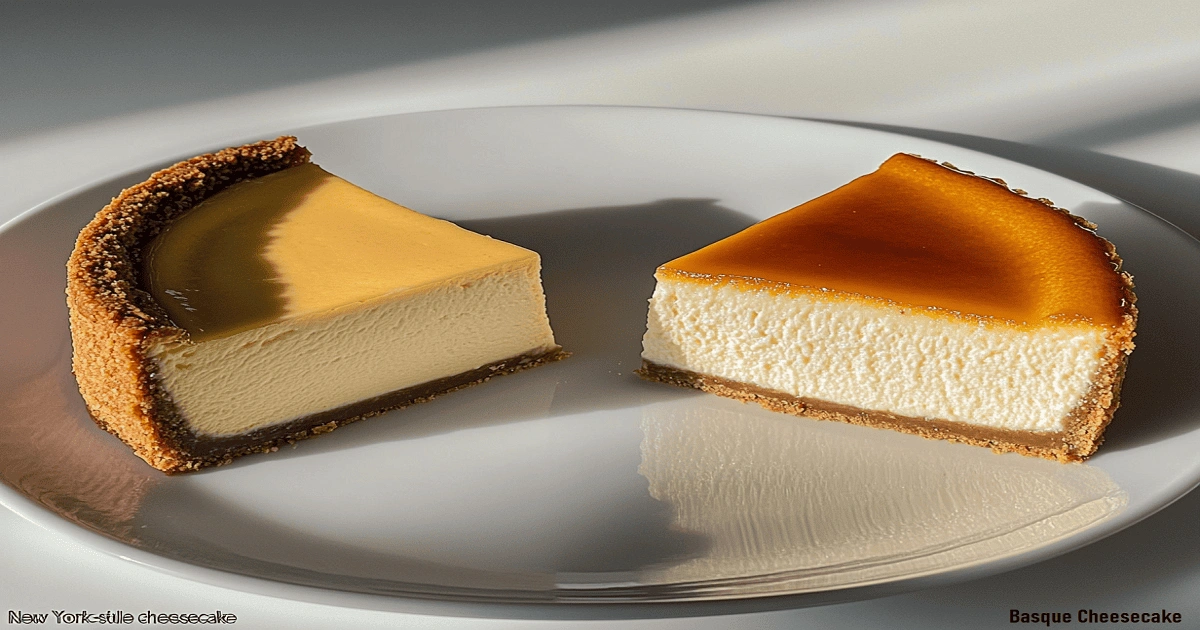
What are the three types of cheesecake?
The main types are baked cheesecake, no-bake cheesecake, and chilled whipped cheesecake.
Is San Sebastian cheesecake Japanese?
No. San Sebastian cheesecake comes from Spain and is known globally as Basque cheesecake.
Final Verdict: Is Basque Cheesecake the Same as Japanese Cheesecake?
So, is Basque cheesecake the same as Japanese cheesecake? While both desserts belong to the same creamy, indulgent family, they are entirely unique in personality and experience. Basque cheesecake is bold, rustic, and rich, known for its caramelized top and custard-like center. It embraces imperfection with its charred edges and smooth, velvety interior.
On the other hand, Japanese cheesecake is light, fluffy, and almost weightless. With its soufflé-like texture and subtle sweetness, it offers a gentler take on traditional cheesecake. It’s elegant, refined, and delicately satisfying—like biting into a sweet, airy cloud.
What connects them is their shared departure from the dense, crust-heavy classics. What separates them is how they deliver joy: one with depth and richness, the other with softness and lift.
Choosing between them isn’t about picking a winner—it’s about matching your mood or moment. Whether you crave bold and indulgent or light and uplifting, each cheesecake offers something special. Try both. Enjoy the contrast. And celebrate the global magic of cheesecake, slice by slice.
